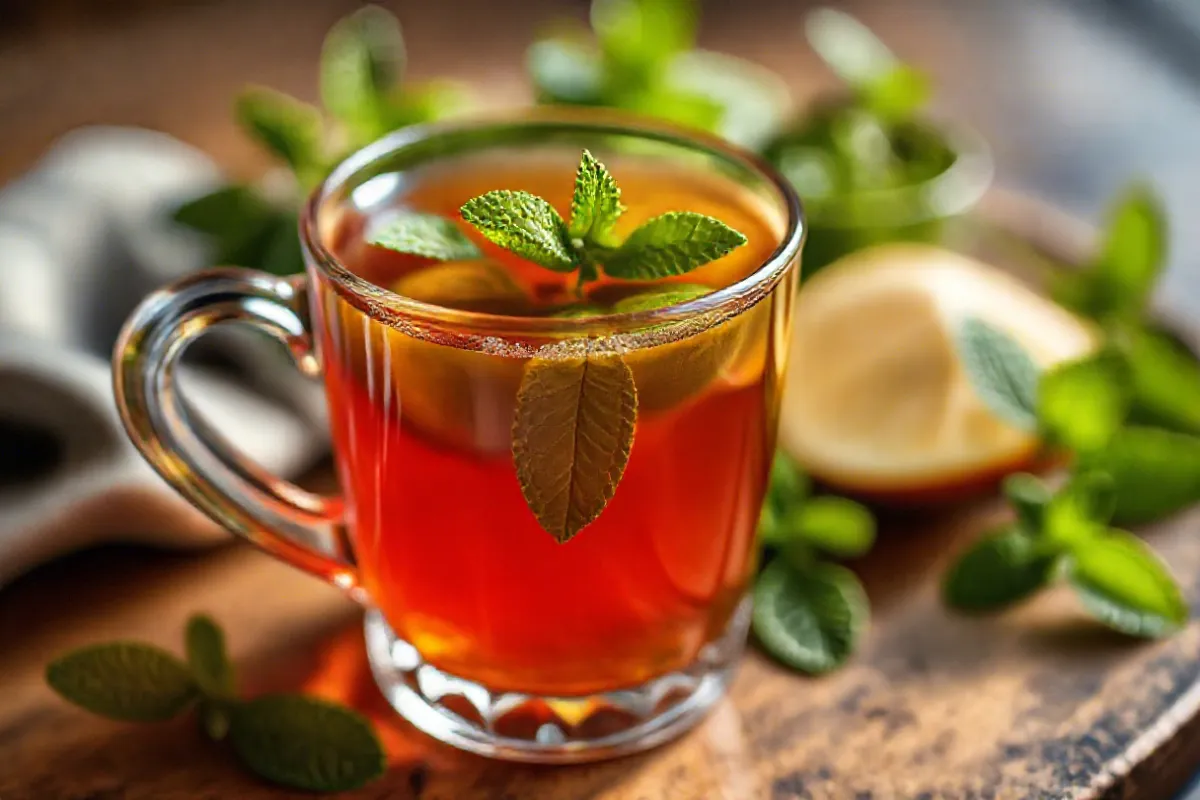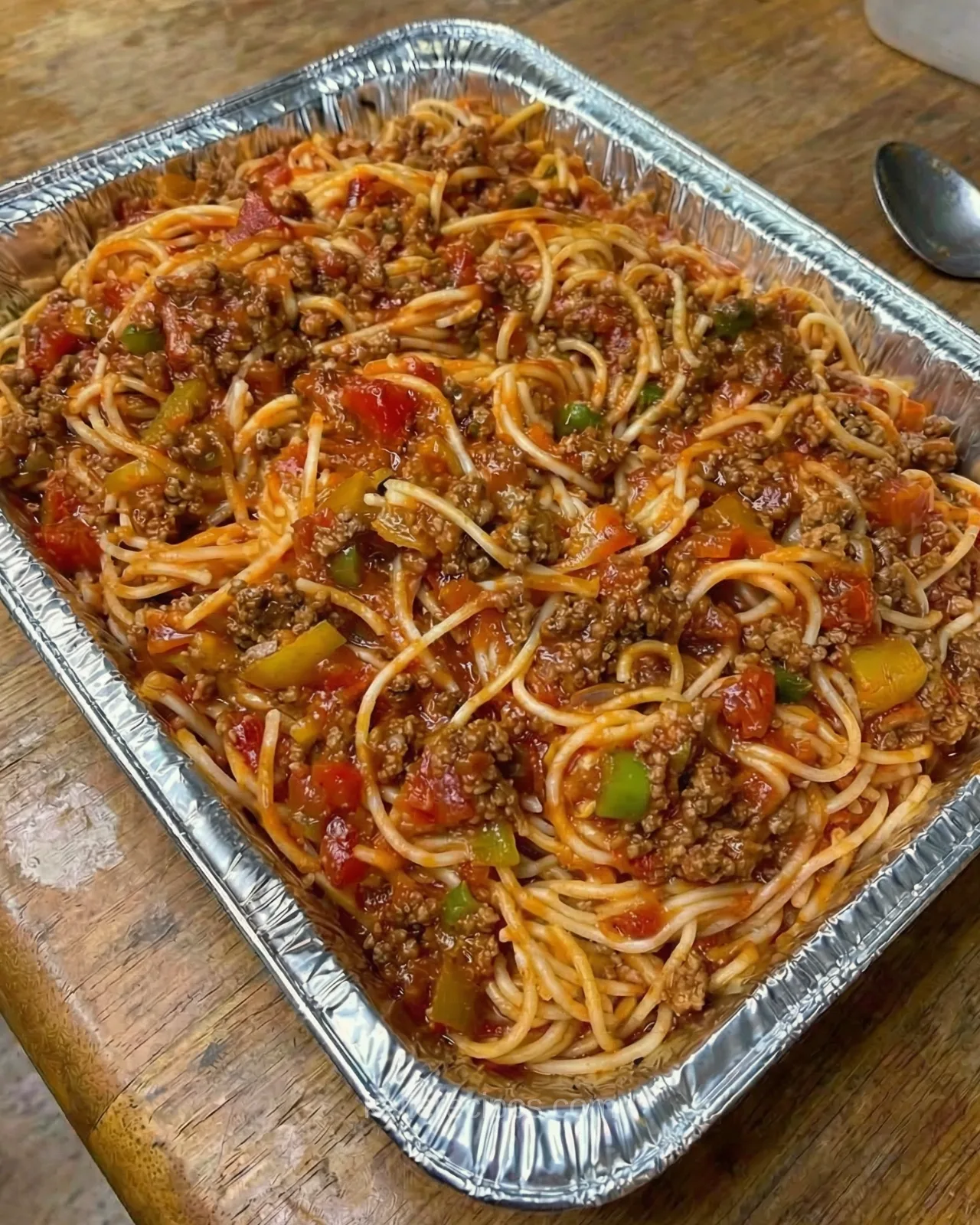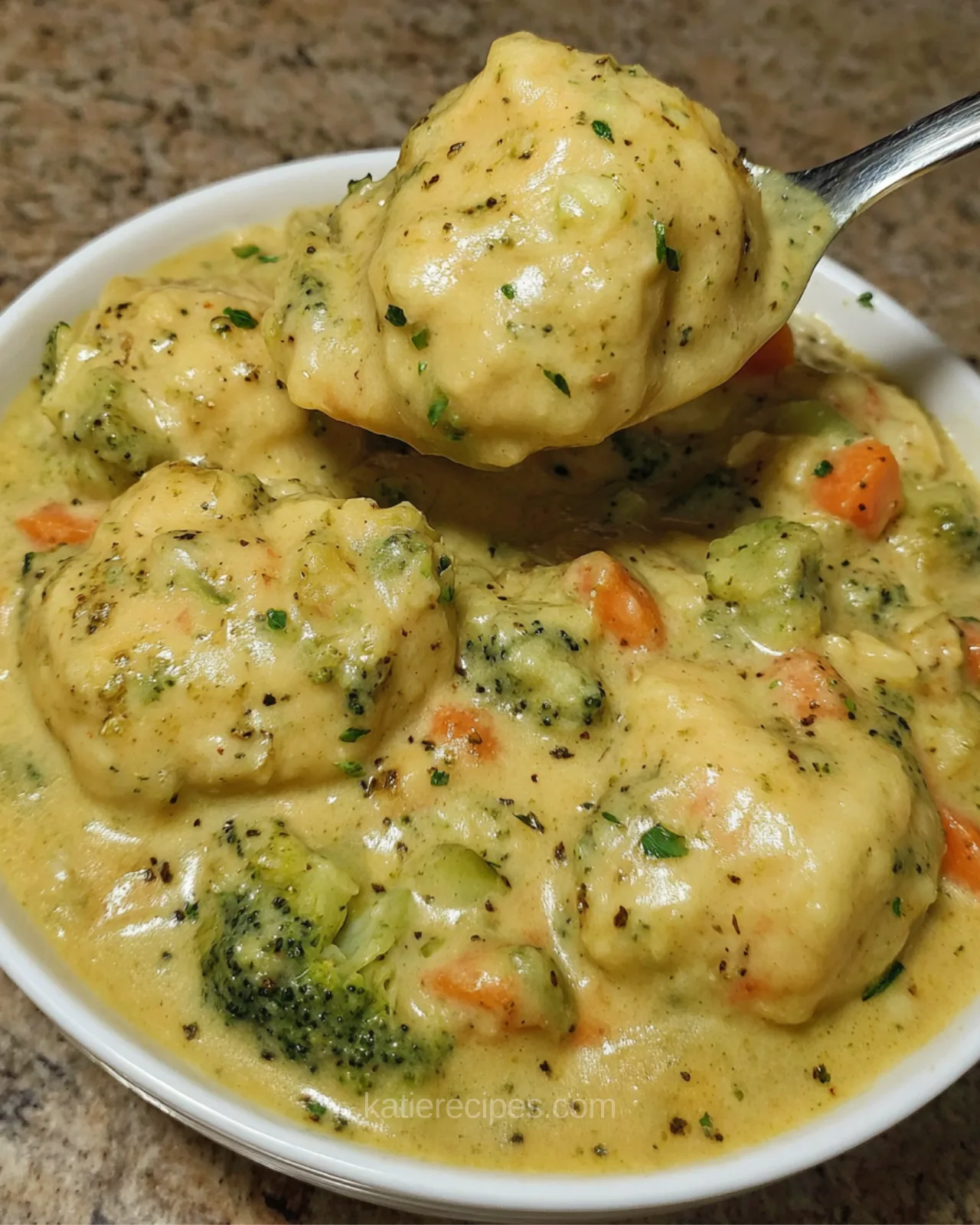Moroccan Mint Tea, also known as Maghrebi mint tea or Attay, serves as more than just a drink; it symbolizes hospitality, tradition, and warmth. This iconic beverage is deeply rooted in Moroccan culture, where families and guests alike enjoy it daily. Served in beautifully ornate teapots and poured from a height to create frothy bubbles, Moroccan mint tea embodies both the ritual and the refreshing taste. In this article, we’ll explore the origins and cultural significance of Moroccan mint tea, dive into the ingredients and preparation methods, and share tips for perfecting your own cup at home.
The Cultural Significance of Moroccan Mint Tea
Moroccan mint tea holds a special place in Moroccan society, where it plays an integral role in social gatherings, celebrations, and everyday life. This tea represents more than just a beverage; it symbolizes friendship, tradition, and the warm hospitality for which Morocco is famous. People often serve mint tea to guests as a gesture of welcome and respect, making it a cornerstone of Moroccan hospitality.
Historical Background
The tradition of mint tea in Morocco began in the 19th century when the country started trading with European nations. Merchants introduced Chinese green tea, known as gunpowder tea, to Morocco during this time, and it quickly became a popular base for the mint-infused drink. Over the years, Moroccans evolved the tea to include fresh mint leaves and sugar, creating the sweet, aromatic beverage that they cherish today.
The proverb “The first glass is as gentle as life, the second is as strong as love, and the third is as bitter as death” is frequently paired with Moroccan mint tea. This reflects the increasing strength of the tea as you pour it from the same teapot multiple times, infusing more flavor with each serving. To delve deeper into Moroccan culinary traditions, explore more Moroccan dishes to try.
Social Importance
In Moroccan culture, preparing and serving mint tea brings people together. Typically, the head of the household or a respected elder prepares and serves the tea, especially during gatherings and special occasions. The process of making and pouring the tea requires great care and attention to detail, reflecting the importance of the moment. You serve the tea in small glasses on a silver tray, often accompanied by sweet pastries or nuts.
Pouring the tea from a height, known as “aeration,” not only enhances the flavor of the tea but also creates a frothy top that Moroccans highly prize. The pouring technique, often passed down through generations, adds to the tea’s cultural significance.
Essential Ingredients for Moroccan Mint Tea
The ingredients for Moroccan mint tea are simple yet essential to achieving its distinctive flavor. Authentic Moroccan mint tea relies on a specific combination of ingredients that create the perfect balance of sweetness and mintiness.
Key Ingredients
- Gunpowder Tea: The base of Moroccan mint tea, gunpowder green tea, is a variety of Chinese green tea. The leaves are rolled into small pellets, which unfurl when steeped, releasing a robust and slightly smoky flavor.
- Fresh Mint: Spearmint, also known as Nana mint, is the preferred variety for Moroccan mint tea. It has a strong, sweet flavor that complements the bitterness of the green tea. If you can’t find spearmint, you can use other mint varieties, but the flavor may vary.
- Sugar: Traditionally, Moroccan mint tea is quite sweet. White sugar is typically used, and you add it generously to the tea. However, you can adjust the amount of sugar according to personal preference or dietary needs.
Importance of Authentic Ingredients
The authenticity of Moroccan mint tea lies in the quality of its ingredients. By using fresh, high-quality mint and gunpowder tea, you ensure that the tea will have the rich, full-bodied flavor that characterizes this drink. While pre-packaged mint tea bags or other shortcuts may seem tempting, they simply can’t replicate the flavor and experience of authentic Moroccan mint tea.
Possible Substitutions
While sticking with traditional ingredients is best, you can make some substitutions if necessary:
- Tea: If you don’t have gunpowder tea, you can use other green teas, but they will result in a milder flavor.
- Mint: If spearmint isn’t available, peppermint or other types of mint can be used, though the flavor will differ slightly.
- Sweeteners: For those who prefer a less sweet tea or need to avoid sugar, honey or agave syrup can serve as alternatives, though they will slightly alter the taste.
Step-by-Step Guide to Making Moroccan Mint Tea
Making Moroccan mint tea might seem complex, but with the right steps, you can easily prepare this delicious and refreshing beverage at home.
1. Prepare Your Ingredients
Start by gathering the necessary ingredients:
- 1 tablespoon of gunpowder loose leaf tea
- 4 branches of fresh mint (spearmint preferred)
- 2 tablespoons of white sugar (adjust to taste)
- 3 cups of water
2. Boil the Water
Begin by boiling the water in a kettle. Moroccan mint tea requires boiling water for optimal infusion of the tea leaves and mint. Take the water off the fire as soon as it reaches a rolling boil.
3. Clean the Tea Leaves
Place the gunpowder tea leaves in a traditional Moroccan teapot, known as a berrad. Pour about 1 cup of the boiling water into the teapot, swish it around to clean the tea leaves, and then pour out the water. This step helps to remove any impurities or bitterness from the tea.
4. Infuse the Tea
Add the remaining boiling water to the teapot, filling it about one inch below the brim. Add the sugar and stir to dissolve. Place the teapot on the stove over medium heat and allow the tea to boil for 1 to 3 minutes, depending on how strong you prefer it. The longer the tea boils, the stronger and more caffeinated it will be.
5. Add the Mint
Once the tea has boiled, add the fresh mint leaves to the teapot. Ensure that the mint is fully submerged in the water; otherwise, it may leave a bitter taste. If the mint branches are too long, bend them to fit into the teapot. Let the tea and mint steep together for another 1 to 2 minutes until the liquid starts to foam slightly.
6. Serve the Tea
Turn off the heat and carefully wrap the teapot handle with a cotton cloth, as it will be very hot. Pour the tea from a height into small glasses to create a frothy top. This technique, known as aeration, enhances the flavor and presentation of the tea.
7. Enjoy Your Moroccan Mint Tea
Serve the tea immediately, while it’s still hot. Moroccan mint tea is traditionally enjoyed with sweet pastries or biscuits, making it a perfect treat for guests or a relaxing afternoon.
The Traditional Moroccan Tea Ceremony
The preparation and serving of Moroccan mint tea go beyond a culinary task; they embody a ceremonial act that reflects the values of hospitality and respect. The tea ceremony forms an essential part of Moroccan culture, especially in social settings.
The Role of the Host
In traditional Moroccan households, the head of the family or a respected elder typically takes on the responsibility of making and serving mint tea. This person carefully prepares the tea, paying attention to every detail to ensure perfection. The ceremony begins when the host brings a large, artisanal silver tray, complete with a teapot, tea glasses, and sugar, to the living room or gathering area. The host then prepares the tea while engaging in conversation with the guests, making the process as much a part of the gathering as the tea itself.
The Significance of the Teapot and Tray
The traditional Moroccan teapot, or berrad, plays a crucial role in the tea-making process. Made of metal, often silver or stainless steel, the teapot withstands the high heat needed to brew the tea. The accompanying tray, usually made of silver or brass, is often elaborately decorated, adding to the ceremonial feel of the tea service.
Moroccans typically serve the tea in small glasses rather than cups, allowing guests to enjoy multiple servings. Each glass is filled about three-quarters full, with the tea being poured from a height to create a frothy top. This pouring technique forms an integral part of the ceremony, adding both flair and flavor to the tea.
Pouring Techniques
The way you pour the tea is almost as important as the tea itself. Pouring from a height not only aerates the tea, enhancing its flavor, but also creates a frothy top that is considered the hallmark of a well-made cup of Moroccan mint tea. The height from which you pour the tea can vary, with more experienced hosts often pouring from a greater height to showcase their skill.
Choosing the Right Teapot and Glasses
To make authentic Moroccan mint tea, you must use the right equipment. The teapot and glasses are not just functional; they also play a significant role in the tea-making ceremony.
The Moroccan Teapot (Berrad)
The berrad is a traditional Moroccan teapot made of metal, often silver or stainless steel. Its design is both practical and beautiful, with a long spout that makes it easy to pour the tea from a height. The berrad is specifically designed to handle the high heat required to brew the tea, and its shape helps to concentrate the flavors.
When choosing a Moroccan teapot, look for one that is well-made and durable, as it will be used frequently if you’re a fan of mint tea. A quality teapot will last for years and become a cherished part of your kitchen.
Selecting Tea Glasses
Moroccan tea glasses are typicallysmall, holding about 3-4 ounces of liquid. These glasses are often ornately decorated with colorful patterns or gold trim, adding to the aesthetic appeal of the tea ceremony. The size of the glasses allows for multiple servings, which is a key aspect of the tea-drinking experience in Morocco.
When selecting tea glasses, consider both functionality and design. Opt for glasses that are sturdy and can withstand the heat of the tea, but also choose ones that reflect your personal style or the cultural significance of the ceremony.
Caring for Your Teapot and Glasses
To maintain the quality and appearance of your Moroccan teapot and glasses, proper care is essential:
- Teapot: After each use, rinse the teapot with warm water and dry it thoroughly to prevent rusting. Avoid using harsh detergents, as they can tarnish the metal. If your teapot is silver, you may need to polish it occasionally to maintain its shine.
- Glasses: Wash tea glasses by hand with warm, soapy water. Be gentle, especially if they are decorated with intricate designs, as these can be delicate. Dry the glasses immediately to prevent water spots and maintain their clarity.
Flavoring Moroccan Mint Tea
While the classic recipe for Moroccan mint tea is delicious on its own, many people enjoy experimenting with different flavors and ingredients to create unique variations. Here are some popular ways to flavor Moroccan mint tea:
Adding Herbs and Spices
Moroccan mint tea can be infused with various herbs and spices to enhance its flavor and provide additional health benefits:
- Verbena: Adding a few sprigs of verbena to your mint tea gives it a citrusy, refreshing taste. Verbena is also known for its calming properties, making it a great addition for evening tea.
- Cinnamon: A stick of cinnamon added to the teapot gives the tea a warm, spicy flavor that complements the mint. Cinnamon is often used in Moroccan tea during the colder months to add a cozy, comforting touch.
- Absinthe (Sheba): Known for its bitter taste, absinthe is often added to Moroccan mint tea for its digestive benefits. To prevent overpowering the other flavors, use it sparingly.
Seasonal Adjustments
Moroccans often adjust the flavors of their mint tea based on the season:
- Summer: During the hot summer months, Moroccans may add cooling herbs like fresh basil or lemon balm to their mint tea. These herbs provide a refreshing twist that is perfect for beating the heat.
- Winter: In the colder months, warming spices like ginger or cloves may be added to the tea. These spices not only enhance the flavor but also provide a warming effect that is perfect for chilly days.
Health Benefits of Flavored Tea
In addition to enhancing the flavor, adding herbs and spices to Moroccan mint tea can provide various health benefits:
- Digestive Aid: Mint and absinthe are both known for their digestive properties, making this tea an excellent choice after a heavy meal.
- Antioxidant Boost: Green tea, the base of Moroccan mint tea, is rich in antioxidants, which help protect the body from free radicals and support overall health.
- Calming Effect: Herbs like verbena and chamomile can have a calming effect, helping to reduce stress and promote relaxation.
How to Serve Moroccan Mint Tea
The way Moroccan mint tea is served can enhance the overall experience, making it a memorable part of any gathering.
Traditional Serving Methods
Moroccan mint tea is traditionally served in small, ornate glasses, poured from a height to create a frothy top. The tea is usually served three times, with each glass becoming stronger as the tea continues to steep. This tradition is a reflection of Moroccan hospitality, symbolizing the importance of taking time to enjoy the company of others.
Pairing Mint Tea with Moroccan Pastries
Mint tea is often enjoyed with a variety of sweet Moroccan pastries, such as:
- Chebakia: A sesame-coated cookie that is deep-fried and soaked in honey, making it a sweet and sticky treat that pairs perfectly with the refreshing taste of mint tea.
- Kaab el Ghazal: Also known as gazelle horns, these crescent-shaped pastries are filled with almond paste and flavored with orange blossom water, offering a delicate sweetness that complements the tea.
- Ghriba: A crumbly cookie made with almond or coconut, often flavored with cinnamon or lemon zest. Its subtle sweetness and texture make it an ideal companion to mint tea.
Presentation Tips
To create an authentic Moroccan tea experience, consider the following presentation tips:
- Use a Silver Tray: Serving the tea on a large, silver tray adds to the elegance and tradition of the ceremony. Arrange the teapot, glasses, and any accompanying pastries or snacks on the tray for a beautiful presentation.
- Decorate with Fresh Mint: Garnish each glass of tea with a sprig of fresh mint to enhance the aroma and flavor. This also adds a visual touch that makes the tea even more inviting.
- Serve Warm: Moroccan mint tea is best enjoyed warm, so serve it immediately after preparation. If you’re serving a large group, consider keeping the tea warm in the teapot until everyone is ready to be served.
Storing and Reheating Moroccan Mint Tea
If you have leftover Moroccan mint tea or want to prepare it in advance, proper storage and reheating are essential to maintaining its flavor and freshness.
Storing Leftover Tea
Moroccan mint tea can be stored in the refrigerator for up to 24 hours. When ready to store, let the tea cool to room temperature and then put it in an airtight container. This will help preserve the flavor and prevent the tea from absorbing other odors from the fridge.
Reheating Mint Tea
To reheat Moroccan mint tea, pour the desired amount into a small saucepan and heat it over low to medium heat. Avoid bringing the tea to a boil, as this can alter the flavor. Instead, warm the tea gently until it reaches the desired temperature. If you prefer, you can also reheat the tea in a microwave, but be sure to do so in short intervals to prevent overheating.
Storing Mint and Other Ingredients
To keep your mint and other ingredients fresh for future use:
- Mint: Store fresh mint in the refrigerator, wrapped in a damp paper towel, and placed in a plastic bag. This will keep the mint fresh for up to a week. Alternatively, you can freeze mint leaves in ice cube trays with water for longer storage.
- Tea: Keep your gunpowder tea in an airtight container, away from light and moisture, to preserve its flavor and potency.
- Spices: Store spices in a cool, dark place in airtight containers to maintain their freshness and flavor.
FAQs and Common Issues
Even with the best ingredients and techniques, you may encounter some challenges when making Moroccan mint tea. Here are answers to common questions and tips for troubleshooting:
Can I Use Other Types of Tea for Moroccan Mint Tea?
While gunpowder green tea is traditional, you can experiment with other types of green tea or even black tea for a different flavor profile. However, keep in mind that using a different tea will alter the taste of the final product.
How Do I Adjust the Sweetness of the Tea?
The traditional Moroccan mint tea is quite sweet, but you can adjust the sugar to your taste. If you prefer a less sweet tea, start with 1 tablespoon of sugar and add more as needed. For those who avoid sugar, alternative sweeteners like honey or stevia can be used, though they will slightly change the flavor.
Is There a Caffeine-Free Version of Moroccan Mint Tea?
If you want to enjoy Moroccan mint tea without the caffeine, you can use a caffeine-free herbal tea as the base, such as rooibos or chamomile. While this won’t replicate the exact taste of traditional Moroccan mint tea, it will still provide a delicious, minty beverage that’s perfect for evening relaxation.
What’s the Best Way to Clean a Moroccan Teapot?
To clean a Moroccan teapot, rinse it with warm water immediately after use. Avoid using soap, as it can leave a residue that affects the flavor of the tea. If your teapot has stubborn stains or buildup, a mixture of baking soda and water can be used as a gentle scrub.
Can I Serve Moroccan Mint Tea Cold?
While traditionally served hot, Moroccan mint tea can also be enjoyed cold, especially during the summer months. To serve it cold, prepare the tea as usual, then allow it to cool to room temperature before refrigerating. Serve the chilled tea over ice, garnished with fresh mint leaves for a refreshing twist.
Troubleshooting Common Mint Tea Problems
If your Moroccan mint tea isn’t turning out as expected, here are some tips to help you troubleshoot and improve your next batch:
Bitter or Overly Strong Tea
If your tea tastes bitter or is too strong, it may have been steeped for too long or at too high a temperature. To fix this, reduce the boiling time and ensure the water is not too hot when adding the tea leaves. If the tea is still too strong, try adding more mint or a bit more sugar to balance the flavors.
Cloudy or Murky Tea
Cloudiness in tea can be caused by impurities in the water or the tea leaves themselves. To prevent this, use filtered water and be sure to clean the tea leaves as described earlier in the recipe. If your tea is already cloudy, it’s still safe to drink, but next time, try rinsing the tea leaves more thoroughly before brewing.
Adjusting the Flavor
If your tea is too sweet, too minty, or not flavorful enough, you can adjust the ingredients to suit your taste. For less sweetness, reduce the amount of sugar or use a natural sweetener like honey. If you prefer a stronger mint flavor, add more fresh mint leaves or allow the tea to steep for an extra minute or two. On the other hand, if the mintflavor is too strong, simply use fewer leaves or reduce the steeping time.
Conclusion and Final Thoughts on Moroccan Mint Tea
Moroccan mint tea is more than just a beverage; it is a symbol of Moroccan hospitality, culture, and tradition. The ritual of preparing and serving this tea brings people together, whether for a casual gathering or a special occasion. By following the steps outlined in this article, you can recreate this authentic experience in your own home, savoring the unique flavors and aromas that have made Moroccan mint tea beloved around the world.
Whether you stick to the traditional recipe or experiment with different herbs and spices, the process of making Moroccan mint tea is a rewarding experience. It’s a chance to slow down, appreciate the moment, and share something special with those around you.

Call to Action
Now that you have a comprehensive guide to making and enjoying Moroccan mint tea, it’s time to put it into practice! Gather your ingredients, follow the steps, and experience the rich flavors of this traditional Moroccan beverage. Share your creations with friends and family, and don’t hesitate to experiment with variations to make the tea your own. We’d love to hear about your experiences, so feel free to leave a comment or share your tips and tricks. For more Moroccan recipes and cultural insights, explore other sections of our website.





